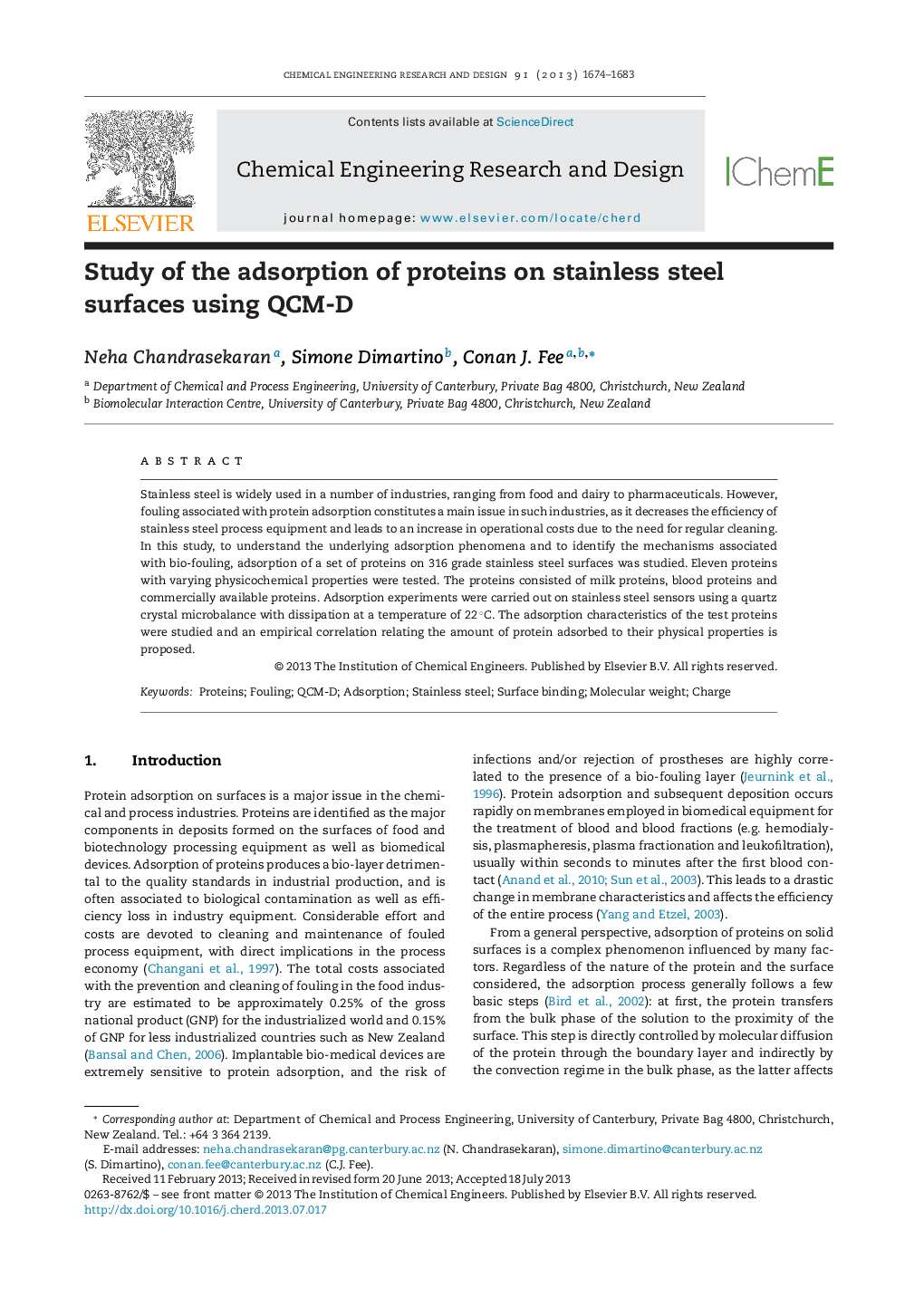| Article ID | Journal | Published Year | Pages | File Type |
|---|---|---|---|---|
| 621177 | Chemical Engineering Research and Design | 2013 | 10 Pages |
•Reversible and irreversible protein adsorption was found in most cases.•Relationship between protein adsorbed to molecular weight of the protein.•Relationship between protein adsorbed to net charge of the protein.
Stainless steel is widely used in a number of industries, ranging from food and dairy to pharmaceuticals. However, fouling associated with protein adsorption constitutes a main issue in such industries, as it decreases the efficiency of stainless steel process equipment and leads to an increase in operational costs due to the need for regular cleaning. In this study, to understand the underlying adsorption phenomena and to identify the mechanisms associated with bio-fouling, adsorption of a set of proteins on 316 grade stainless steel surfaces was studied. Eleven proteins with varying physicochemical properties were tested. The proteins consisted of milk proteins, blood proteins and commercially available proteins. Adsorption experiments were carried out on stainless steel sensors using a quartz crystal microbalance with dissipation at a temperature of 22 °C. The adsorption characteristics of the test proteins were studied and an empirical correlation relating the amount of protein adsorbed to their physical properties is proposed.
